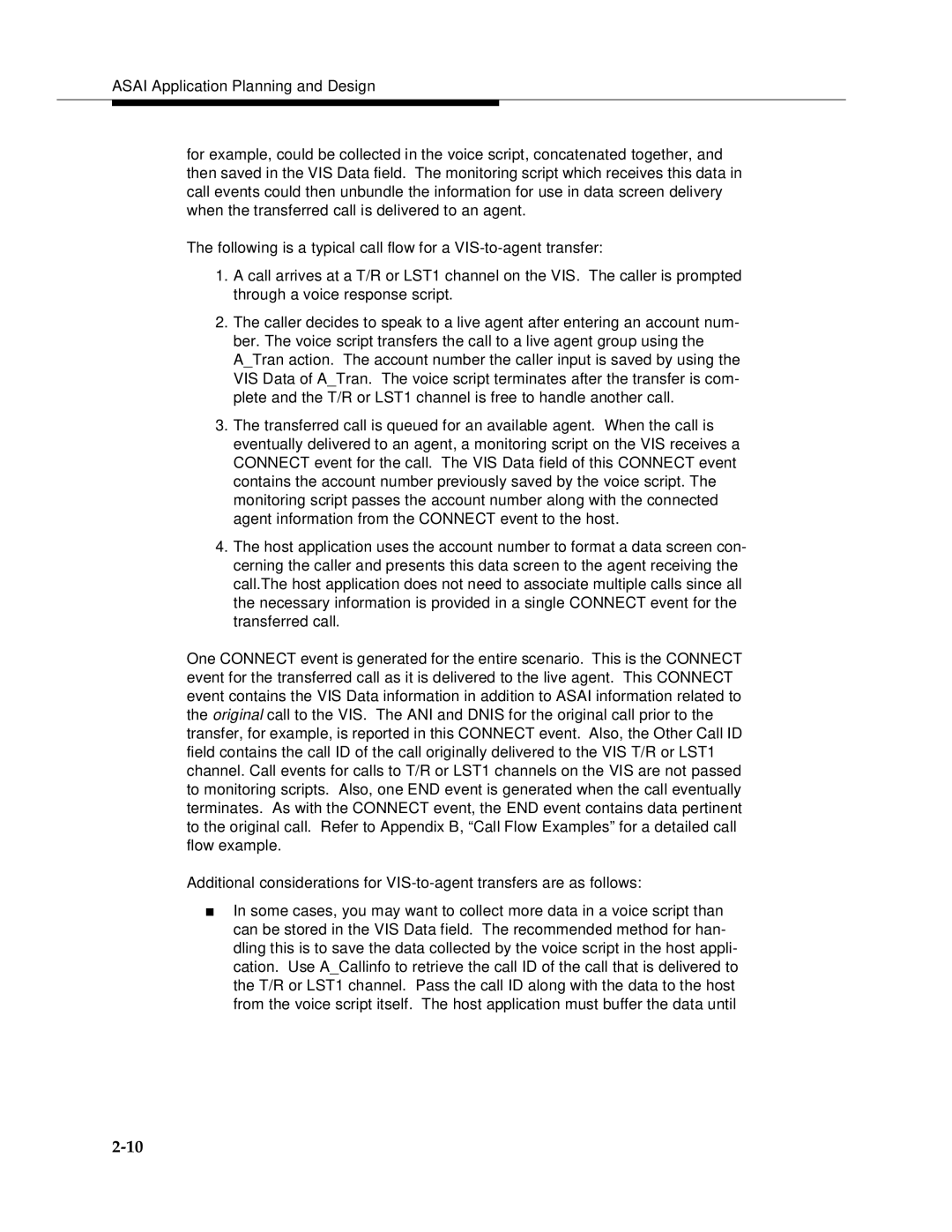ASAI Application Planning and Design
for example, could be collected in the voice script, concatenated together, and then saved in the VIS Data field. The monitoring script which receives this data in call events could then unbundle the information for use in data screen delivery when the transferred call is delivered to an agent.
The following is a typical call flow for a
1.A call arrives at a T/R or LST1 channel on the VIS. The caller is prompted through a voice response script.
2.The caller decides to speak to a live agent after entering an account num- ber. The voice script transfers the call to a live agent group using the A_Tran action. The account number the caller input is saved by using the VIS Data of A_Tran. The voice script terminates after the transfer is com- plete and the T/R or LST1 channel is free to handle another call.
3.The transferred call is queued for an available agent. When the call is eventually delivered to an agent, a monitoring script on the VIS receives a CONNECT event for the call. The VIS Data field of this CONNECT event contains the account number previously saved by the voice script. The monitoring script passes the account number along with the connected agent information from the CONNECT event to the host.
4.The host application uses the account number to format a data screen con- cerning the caller and presents this data screen to the agent receiving the call.The host application does not need to associate multiple calls since all the necessary information is provided in a single CONNECT event for the transferred call.
One CONNECT event is generated for the entire scenario. This is the CONNECT event for the transferred call as it is delivered to the live agent. This CONNECT event contains the VIS Data information in addition to ASAI information related to the original call to the VIS. The ANI and DNIS for the original call prior to the transfer, for example, is reported in this CONNECT event. Also, the Other Call ID field contains the call ID of the call originally delivered to the VIS T/R or LST1 channel. Call events for calls to T/R or LST1 channels on the VIS are not passed to monitoring scripts. Also, one END event is generated when the call eventually terminates. As with the CONNECT event, the END event contains data pertinent to the original call. Refer to Appendix B, “Call Flow Examples” for a detailed call flow example.
Additional considerations for
■In some cases, you may want to collect more data in a voice script than can be stored in the VIS Data field. The recommended method for han- dling this is to save the data collected by the voice script in the host appli- cation. Use A_Callinfo to retrieve the call ID of the call that is delivered to the T/R or LST1 channel. Pass the call ID along with the data to the host from the voice script itself. The host application must buffer the data until
